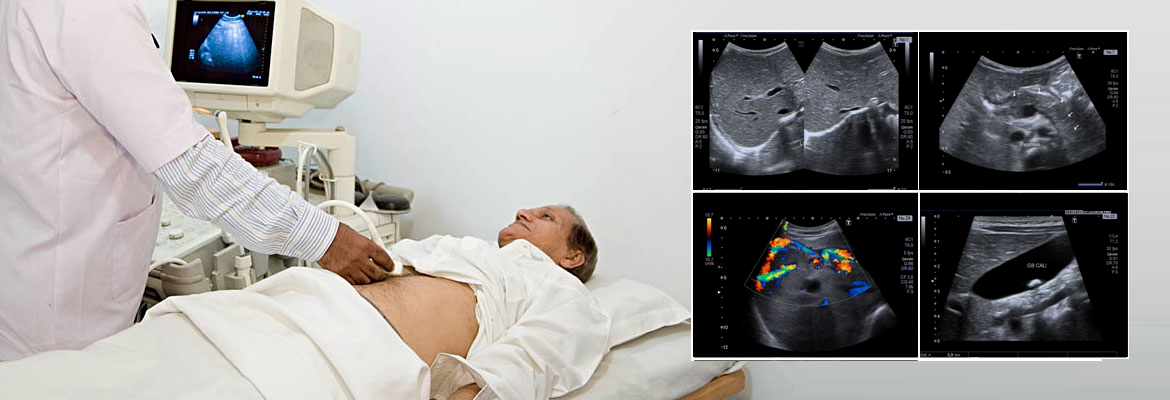We provide different types of routine and specialized ultrasonographies and colour Doppler evaluations for assessment of various gastrointestinal, hepato-biliary and pancreatic pathologies in all the age groups including pediatric patients.
Ushakaal Building, Nr Dhantoli Police Station
Dhantoli, Nagpur - 440012
10:30 AM - 9:00 PM
Monday to Saturday
Gastrointestinal & Hepatobiliary Imaging

Ultrasonography is the most commonly performed and often valuable investigation done in patients with –
- Abdominal problems
- Pain in tummy,
- Gas problems, bloating in stomach
- Belching, water brash
- Loose motions,
- Diarrhea,
- Constipation,
- Jaundice,
- Blood in stools,
- Blood in vomiting
- Pancreatitis,
- Alcoholic liver problems etc.
- Renal colic
- Suspected kidney stone
- Recurrent urinary infections
- Suspected kidney diseases
- Excessive weakness / loss of appetite
- Suspected gall bladder stone etc.
We offer following different kinds of sonographies & Colour Doppler studies for abdominal problems:
- USG Upper Abdomen
- USG Whole Abdomen
- USG Pelvis
- USG KUB
- Portal venous Doppler
- Mesenteric Doppler
- IVC Doppler etc.
Apart from these, we also offer some diagnostic and therapeutic procedures and investigations:-
- USG Guided Ascitic fluid Tapping.
- USG Guided FNACs / Biopsies.
Your doctor may ask you do an abdominal ultrasound if they suspect you have a variety of conditions, including:
- Enlarged organs (such as liver, spleen, or kidneys)
- Fluid in the abdominal cavity
- Gallstones
- Pancreatitis
- Kidney blockage or cancer
- Kidney stones
- Liver cancer
- Appendicitis
- Tumors
- Abdominal aortic aneurysms
- Blood clots etc.
Risks of an Abdominal Ultrasound
An abdominal ultrasound has no risks. Unlike X-rays or CT scans, ultrasounds use no radiation, which is why doctors prefer to use them with pregnant women to examine fetuses.
Certain factors or conditions may interfere with the results of the test, including:
- Severe obesity
- Food inside the stomach
- Leftover barium (a liquid you swallow in some tests that helps your doctor see your stomach and gastrointestinal tract) still in the intestines from a recent barium procedure
- Excess intestinal gas
